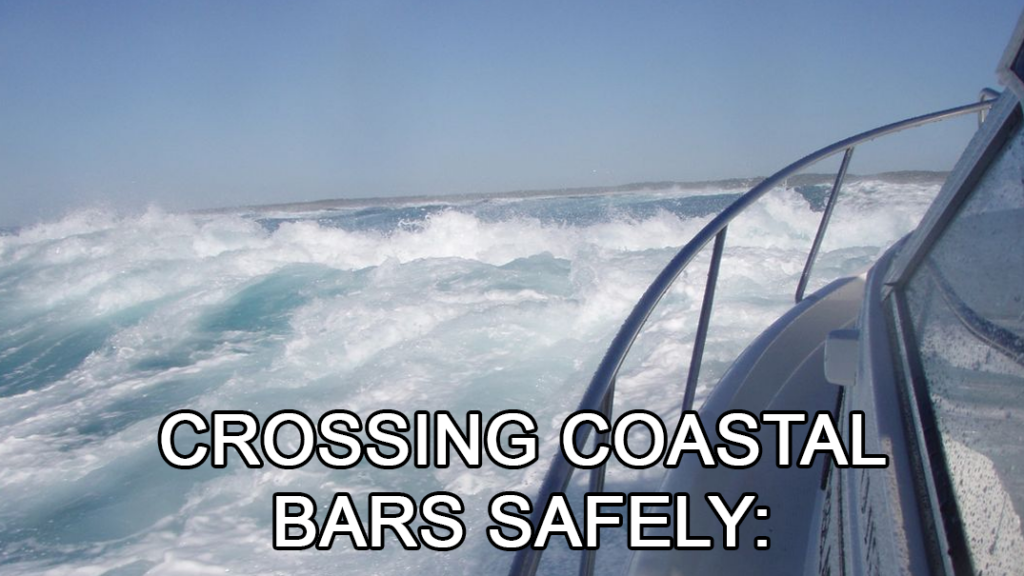In a boating emergency, radio Channel 16 on VHF, or ring Triple Zero (000)

Crossing surf bars is a common but extremely dangerous part of boating along the New South Wales coast. Every year boats are damaged, and people killed or injured when attempted crossings go wrong. Nothing that is written here can make crossing a bar completely safe. This is a general guide only.
It is mandatory for all persons in a recreational vessel to wear a PFD Type 1 when crossing a bar. The entrance to Brisbane Water is an official ocean bar. To see Maritime Authority Website related to wearing lifejacket click here: https://www.nsw.gov.au/driving-boating-and-transport/boating-and-marine
The most important points are stop, look and think. Skippers who are not 100% certain of their safety should not go. No feed of fish or day at sea is worth risking the boat or people’s lives.
Bar Basics
The movement of sand along the coast and sediment from catchments builds up bars at the entrances to estuaries, rivers and lakes. The dynamic forces of wave action and water movement change the shape, depth and channels on the bar quite regularly.
Local knowledge
Local knowledge is an essential part of crossing any bar. Every bar is different and all bars can change quickly depending on the conditions.
Preparation
After gaining a working knowledge of the bar check the weather forecast and most importantly the state of the tide at the time you want to leave port. An incoming tide is always safer. If possible time your day at sea to coincide with a rising tide both leaving and entering port.
Check that your boat is operating correctly and make sure throttle and steering systems are perfect. Check the battery and fuel tank are locked down or fixed in place. Ensure your safety gear is in good shape and a PFD is available and properly fitted to each person on board.
Warm up the engine and check everything is running smoothly. Do not attempt the crossing if the motor is misfiring or does not respond quickly.
Secure the anchor(s). Do not leave it sitting in a forward well where it could become a lethal missile or be catapulted overboard.
Arrange passengers so that the boat is balanced and secure all gear.
Each person must be wearing a properly fitted PFD of appropriate size (NB: children must wear children’s size PFDs, not adult size).
General information
Always check the weather before leaving port
Make sure you know of any alternative ports or safe anchorage areas before heading out. If the bar becomes impossible to cross make sure you are carrying enough fuel to reach that alternative location.
Alcohol and boating are a dangerous combination at any time. The problems of crossing a bar demand a clear head from all on board.
Most bars or bar areas have radio coverage available on the 27 MHz (Ch 88)and VHF (Ch 16). Marine Rescue Base stations can provide bar information, sea conditions, weather forecasts and tidal data. Using the radio base adds to your safety particularly as you can call before and after crossing to ensure that someone knows you are on the bar and organise assistance should it be needed.
Most importantly, the skipper should have both the experience and temperament to handle the situation. If you are new to boating only cross bars in good conditions and gain experience gradually.